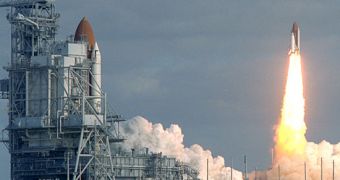The large flash of light that left astronomers puzzled more than three years ago has yet to be explained, Hubble scientists announced recently, although many hours were spent studying the photographs the space telescopes relayed back to Earth on that day. According to the astronomers, the readings do not match those of a supernova, or any other know cosmological events. Basically, the explanation for the flash that appeared on Hubble's images for some 200 days still eludes everyone.
"We have never seen anything like it. No one has been able to come up with a good explanation for this object," Kyle Barbary, an expert working with the Lawrence Berkeley National Laboratory (LBNL), in Berkeley, California, shared with reporters, during the 213th meeting of the American Astronomical Society. He added that the chemical analysis of the object was just as puzzling as the flash itself.
As the glow was discovered during the Supernova Cosmology Project, it received a similar name, and is now known as SCP 06F6. It was discovered on February 21st, 2006, and it grew in intensity for about 100 days, after which time it reached its peak and faded back into the darkness, in another 100 days. During all this time, the astronomers who were observing it live couldn't even tell if the flash originated from our own galaxy, the Milky Way, or if it came from very far away.
"In my view, the crucial next step is to probe for an underlying host galaxy around SCP 06F6. The detection of a host galaxy would (a) confirm the extragalactic nature ... and (b) permit some insight into the nature of the progenitor of SCP 06F6," Boris Gaensicke told Discovery News.
Gaensicke is an associate professor of physics at the University of Warwick, in the UK, and is also the lead author of a new study, published in the September issue of the Astrophysical Journal Letters, detailing the chemical composition of the strange object. He writes that the chemical signature that he was able to decipher matches that of a distant, cool and carbon-rich atmosphere.
He and colleagues hypothesized that the sudden burst of light might have originated from disruptions in a carbon-rich star, or maybe even to a new class of supernovae. "Perhaps it is a new type of supernova. We really haven't learned anything else new about it," said NASA astrophysicist Stefan Immler, from the Goddard Space Flight Center in Greenbelt, Maryland.

 14 DAY TRIAL //
14 DAY TRIAL //